Get the weekly SPARTANAT newsletter.
Your bonus: the free E-Book from SPARTANAT.
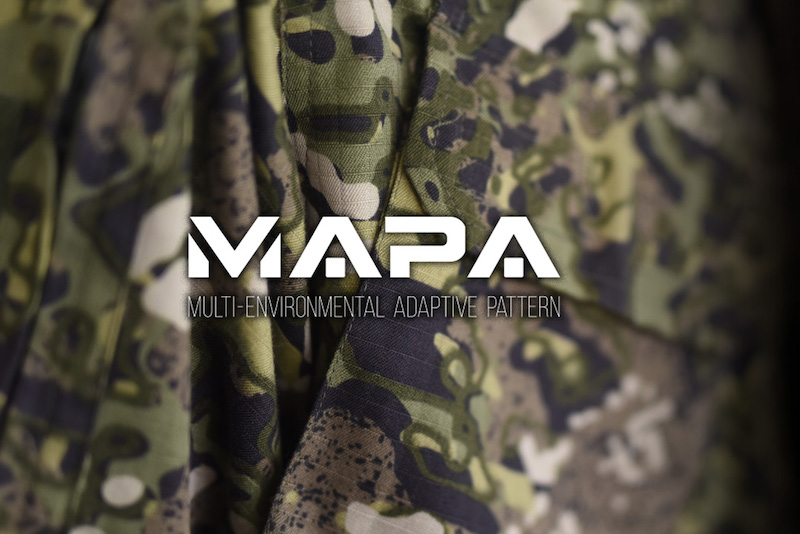
Camouflage pattern: MAPA Camo from Poland
The MAPA camouflage pattern, designed by Maciej Dojlitko in Poland, offers a unique and innovative approach to camouflage design, blending shapes and colors for effective concealment. Despite initial challenges, MAPA has garnered interest in military and commercial sectors, showcasing its potential as a versatile and effective camouflage solution.
If you are interested in military topics, names like MultiCam, A-TACS, Kryptek, PenCott are familiar - each of these patterns was developed based on different assumptions and methods, but they all share a common main function - camouflage. The MAPA camouflage pattern was designed in 2011 in Poland by Maciej Dojlitko, a former doctoral student at the Faculty of Architecture and Design of the Academy of Fine Arts in Gdańsk/Danzig, and attracted attention in the environment because it offers an innovative blend of shapes and colors and a completely unconventional approach to camouflage design.
New and artistic
The first photos showing the effectiveness of the camouflage in a forest area sparked great interest among military personnel, as the human silhouette was completely blurred even from a short distance with the naked eye. Other photos showed a "back-to-back" comparison with the Polish forest camouflage wz. 93 and the US MultiCam in the same location and environment. The MAPA camouflage uniforms (MAPA-A and MAPA-B) were made by Specops. However, it is important to mention that the uniforms were made of 100 percent polyester fabric and then printed with the camouflage pattern in large-format thermal sublimation printing - a solution that is totally unsuitable for long-term use of clothing under field conditions (inadequate breathing parameters and poor resistance of the print to external influences), but was sufficient for research and development purposes.
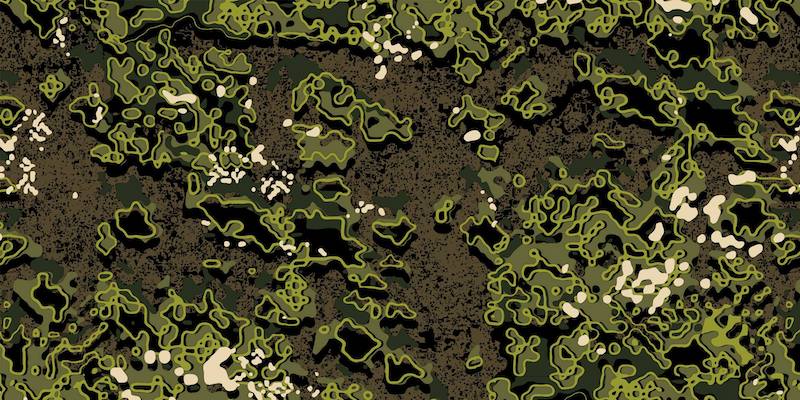
In 2012, MAPA disappeared into obscurity, leaving many puzzled about the reason for its disappearance. It was assumed that it was simply another promising project that disappeared into obscurity.
However, at MSPO 2016, the idea resurfaced. The creator of the design, now an assistant professor with a doctoral degree from his alma mater, came to interest companies, people, and the media in his product. In this way, it only took two months for the first batch of a new fabric to be produced. It was made from US22 standard fabrics of the Polish Army and in the intended color so that it was suitable for clothing production. Additionally, it offered a lower level of Near Infrared (NIR) reflection. Simply put: The material does not "glow" in night vision, meaning it does not create a bright surface that stands out from the background; the pattern arrangement remains unchanged in night vision observation.
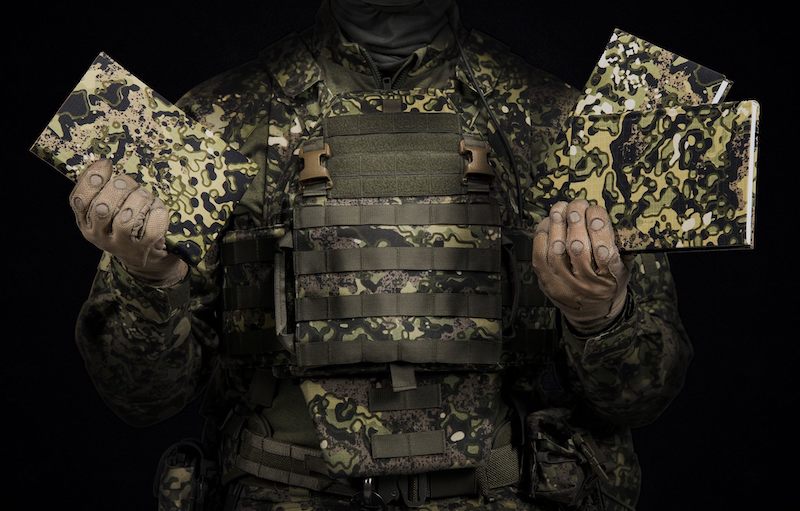
Since autumn 2016, MAPA has been subjected to tests comparing it with other common camouflage patterns in terms of coloration, behavior and performance of micro and macro patterns, as well as the ability to "break up" the silhouette. To make the tests as reliable as possible, they all took place in the same area, under the same weather and light conditions, and taking into account the influence of certain annual vegetation growth periods. Each camouflage pattern is tested at the same test position. The analyzed photos were taken from three distances - 10, 20, and 30 meters - from the same position. Photographic patterns were used to create conditions for analyzing specific camouflage patterns.
The initial results were very promising and motivating for further work. Meanwhile, MAPA participated in a competition organized by the supervisory authority for the introduction of innovative defense technologies - "Innovation for the Polish Armed Forces". There were 174 submissions, and MAPA qualified with five other projects in the "R&D project" category for the final round and received an award at the same time. MAPA is a perfect example that good and original camouflage design does not require immense financial and technological resources. However, its creator does not rest on his laurels. Instead, he is busy developing a whole family of MAPA camouflage patterns.

MAPA Camouflage - The Features
The first thing that stands out is the complete absence of any resemblance to existing camouflage patterns. This is very important because the pattern should also serve as an identification element. Currently, it is increasingly difficult to recognize the country of certain armed forces - let alone specific units, especially in the case of special forces. (Note: This is due to MultCam as the first global camouflage pattern.) This only becomes clear when looking closely at the distinguishing features or characteristic elements of the equipment or armament.
Another original feature is the MAPA color scheme. Many tend to consider it as too dark or too contrasting at first glance, but the decision for these colors was based on an analysis of thousands of photos of Polish forests, which served as the basis for determining the percentage distribution of colors in the color noise. The bright, uniform seladon contour is particularly questioned, but it actually breaks up the silhouette at a distance of 10 meters. There is also MAPA B, which offers a different color scheme and a multi-layered pattern structure. It can be seen as a more universal solution.
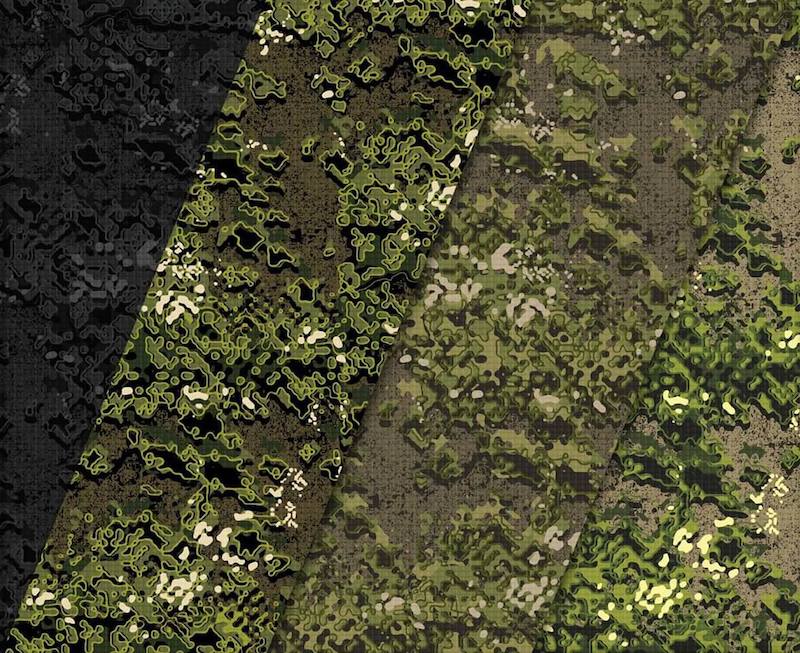
And that's all about the color scheme. The inspiration for the arrangement and the psychedelic shape of the blots can still be explained. The answer is simple - nature. The shapes of the blots used in MAPA are those shapes found in nature in our latitudes. An analysis of suitably modified photos (monochrome photos with significant visible noise) has shown that shapes occurring in a forest during full vegetation have some characteristic features. This knowledge allowed for generating specific shapes, which were then layered on top of each other - and thus MAPA was created.
A distinctive and very striking feature is that the solution takes advantage of the play of light and shadow, simulating depth and a 3D effect of the observed image. The main element of MAPA is the background. Its color is the color noise of Central European forests, which forms the "base" for additional layers of blots and colors simulating vegetation. And to the surprise of those familiar with camouflage, we can recognize a color close to black (of course, a simplification) in MAPA, which does not occur in nature. This dark shade in MAPA is supposed to reproduce the natural play of shadows, i.e., a change (darkening) of colors in poorly lit places. Hence the broken black, which simulates shadows, leading to a 3D effect. Such solutions make MAPA camouflage effective in practice and offer an innovative, original approach to design without reproducing existing patterns. Additionally, MAPA is a generative camouflage solution.
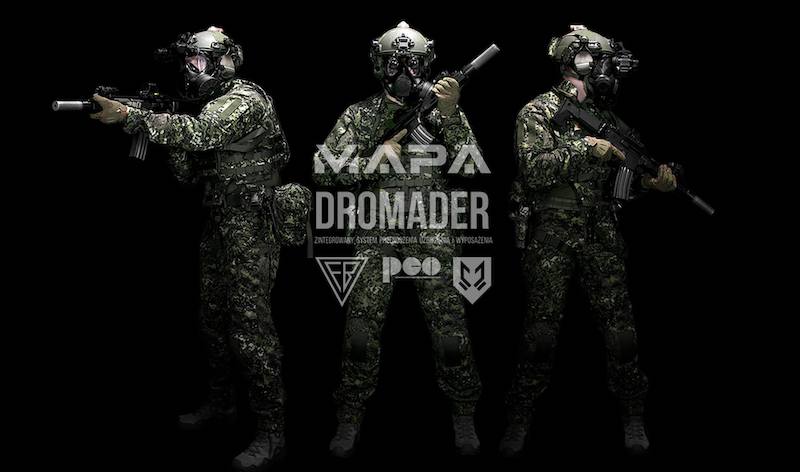
Such a camouflage pattern is easily modifiable and therefore ready to fulfill its task well under different conditions. A perfect counterexample is the current desert camouflage pattern of the Polish armed forces - while the shape of the blots in forest environments is still acceptable (smooth edges, somewhat mimetic), it does not work in desert environments as the naturally occurring shapes in such environments are completely different. In Poland, desert camouflage was created by changing the color scheme from the "forest" variant to a "desert" variant. The job is considered done. It is possible to do the same with MAPA, but the difference is that MAPA still provides perfect camouflage, both in the new terrain and in the color setting. Furthermore, it is possible to apply various mechanisms such as screening, Floyd-Steinberg dithering, and others that can further enhance the camouflage effect. This naturally affects the complexity of the pattern and the manufacturing process, but nothing is impossible, especially given the current state of technology.
Army patterns or Commercial?
So we know what MAPA is, but can it be more than just a scientific project? The interest in MAPA is present among commercial providers as well as end-users from various sectors, including authorities.

SPARTANAT is the online magazine for Military News, Tactical Life, Gear & Reviews.
Send us your news: [email protected]
Ad
similar
Get the weekly SPARTANAT newsletter.
Your bonus: the free E-Book from SPARTANAT.


